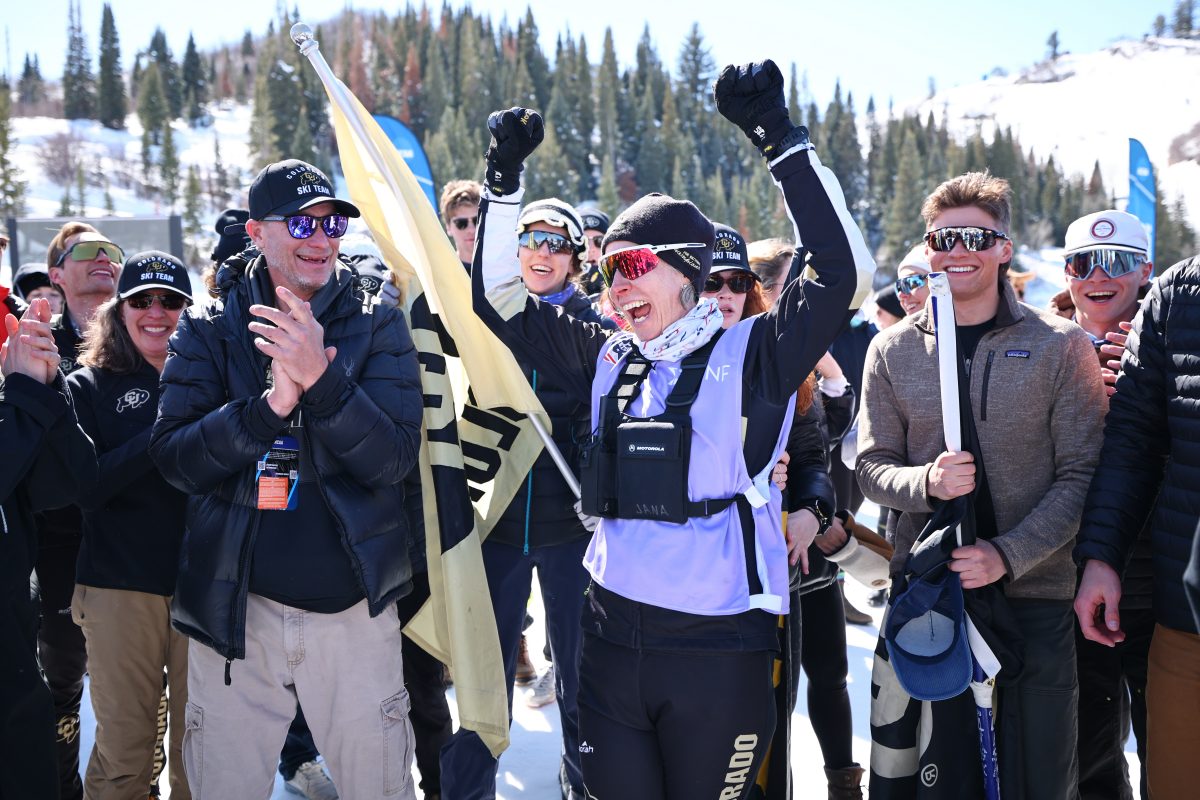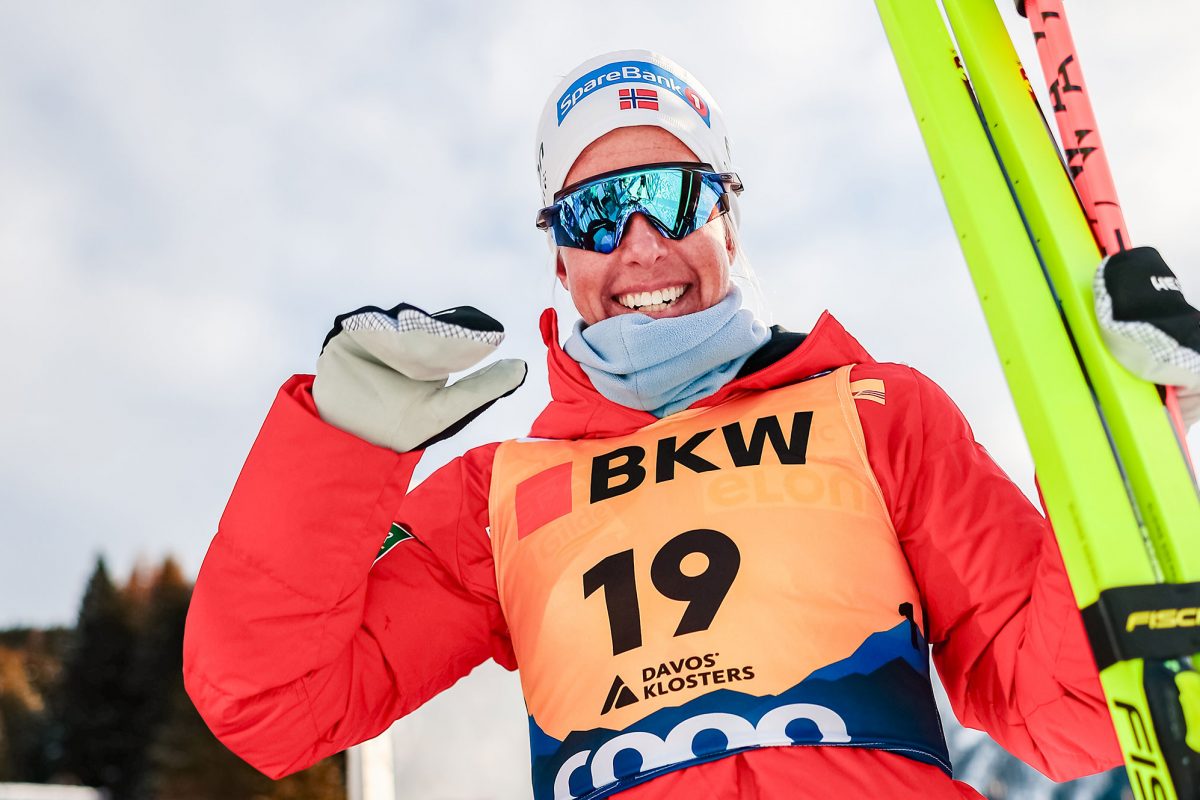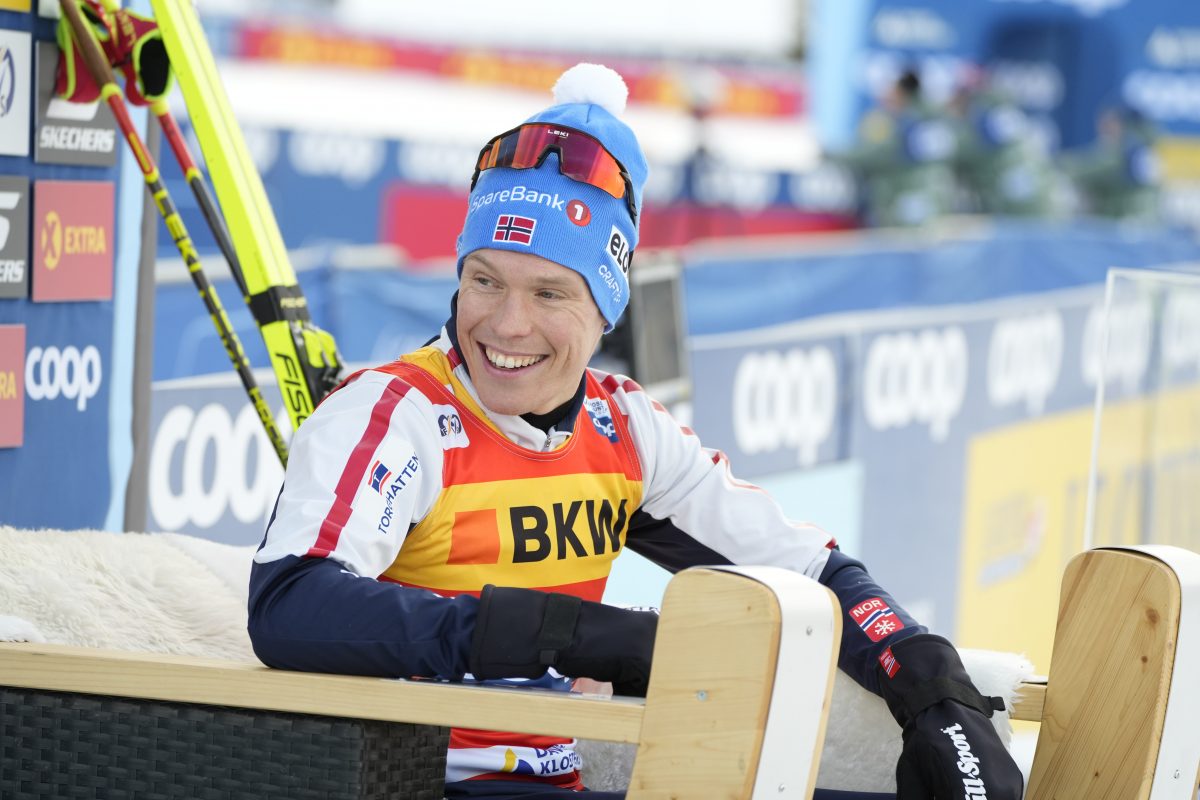
If there was any question as to whether Reid Pletcher would be able to make a comeback after his climbing accident this May, wonder no more. Despite taking two months off of training this summer to recover from severe head trauma from a fall in Boulder Canyon, the Colorado University senior silenced doubters by winning the skate race at the West Yellowstone SuperTour Sprint Showdown on Wednesday morning, 0.25 seconds ahead of runner-up Mike Sinnott of the Sun Valley Ski Education Foundation (SVSEF). Matt Gelso (SVSEF) rounded out the skate podium in third at +1.82.
“[The race] went better than planned,” said Pletcher after his skate race, before results had been posted. “Physically, I’m 100% back…I’m just going to race my way back into shape. I feel great, considering.”
His competitors were understandably impressed with his performance. “That is just amazing,” said Alaska Pacific University’s Reese Hanneman. “That guy’s an altitude-sprint fiend.”

Sinnott, whose second-place in the skate race and win in the classic sprint clinched him the SuperTour Sprint Showdown victory, headlined a successful day for Sun Valley. “We’re really happy with [today],” said SVSEF coach Chris Mallory. “It’s a good way to start off for sure.”
Sinnott, who left the gate wearing the SuperTour sprint leader bib, said he and his teammates had practiced the double-header sprint format leading up to Wednesday’s opener, which featured an unconventional point-to-point, two part individual sprint. The preparation clearly paid off, as Sinnott came away with the overall win.
The man and woman with the fastest combined time between the two races won $250, but the real golden ticket lay in the separate scoring of the classic and skate sprints. Holding essentially two SuperTours on one day gave athletes the opportunity to accumulate more points in the jockey for the World Cup starts awarded to the overall SuperTour leaders after the completion of the December 2- 4 races in Bozeman, MT.
When asked if he felt any pressure to perform well in his stronger discipline, Sinnott was nonchalant. “I don’t feel like I put pressure on; you only race as fast as you can race,” he said. However, he continued, “this year it’s certainly a big goal to get World Cup starts mid-season.”
Sinnott won the classic sprint the hour before the skate, with runner-up Torin Koos (Bridger Ski Foundation/Rossignol) close behind in +0.36. Philip Widmer (Alberta World Cup Academy) took third in + 1.12.

Koos, who recently put in on-snow training in Ramsau, Austria, felt that his races went well. After the skate, in which he finished eighth (+ 4.10) he admitted to feeling much better during the classic portion of the day. The qualifier-format also didn’t play to his strengths, as he has considerable experience in World Cup head-to-head heats. “I have a little more experience with tactics,” he said, but “it was interesting to do back-to-back qualifiers with the different techniques.”
Widmer, who came down from Canada with seven Alberta World Cup Academy (AWCA) teammates to get races under his belt before the NorAms in Silver Star, was especially happy with his third-place classic result, as he’s been working on improving his striding all summer. Widmer has seven years of experience racing internationally for Canada, and though a format like Wednesday’s is never seen on the World Cup, he felt it was still a valuable race experience.
“I think any time you have to adapt and change your approach, there’s always some merit to [a race],” he said. “If nothing else it’s a mental exercise…and you do the best you can. A race is still a race.”
The point-to-point course layout allowed the for another unusual feature on Wednesday: a “wall” of a final climb to the finish, which visibly took its toll on racers as they crossed the line and created interesting strategy on the terrain preceding it.
“If the hill were in the middle of the course…it would be more like a World Cup sprint course where you have to double pole, rolling climb and then finish it off fast,” said Hanneman, a sprint-specialist who finished seventh in the classic sprint and 29th in the skate.
“Usually you are working the big climbs and then finish at max speed.” In anticipation of a tough finish, he said, most people were reserving speed earlier in the 1.5 k course to have energy for the end.
In spite of the SuperTour points on the line, many athletes and coaches treated the season opener as just that—time to get the season started and practice race-day protocol before it really matters.
“We didn’t come down with a lot of expectations,” said AWCA coach Mike Cavaliere. “It was [our] first race, and [Widmer] had a bit of trouble determining what the right take was, as none of them have been down here at this altitude. It’s a good setup for…Silver Star.”

Topher Sabot and Matt Voisin contributed reporting.
Audrey Mangan
Audrey Mangan (@audreymangan) is an Associate Editor at FasterSkier and lives in Colorado. She learned to love skiing at home in Western New York.




4 comments
crashtestxc
November 23, 2011 at 11:28 pm
Why is USSA only putting $250 (only a third of the distance races) up as a prize for the sprints?
By not having heats and offering a lesser prize purse to sprinters, the USSA is clearly making their voice heard that they do not care about the development of sprinting in the U.S.
There is a reason that sprinting includes heats on the World Cup circuit and “sprint-only qualifiers” cannot be found anywhere else except here.
Not everyone is fooled by tacking on a stupid moniker like “showdown” to the race format…
crashtestxc
November 23, 2011 at 11:29 pm
Great job to all of the racers that participated. Rock on Reid!
ben.arians
November 24, 2011 at 12:56 am
I wasn’t there, so I don’t know for sure, but couldn’t use of the “qualifier only” format have been because the venue didn’t support sprint heats very well? Maybe not enough room, or some other constraints that made the dual “qualifier” format
a better option? While not used in the World Cup, it seems interesting, and probably made for good spectating, and a change from the typical distance individual start, low rpm, altitude racing that usually occurs at West.
lsiebert
November 24, 2011 at 11:21 pm
They run it this way for points reasons. Because only sprint qualifiers are scored for FIS points, they can fit two early season sprint races in, which can be important for skiers looking to lower their points to make teams and meet qualifying standards for international competition. Sprint heats require a higher level of organization and course preparation, and as we have seen before in West, Thanksgiving snow is something to give thanks for.